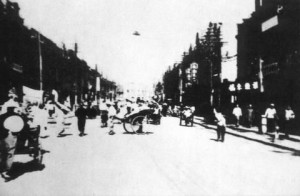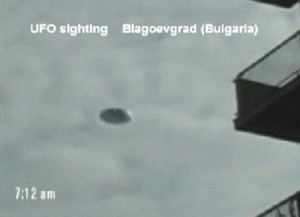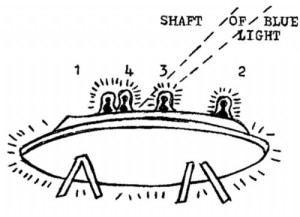THINK ABOUTIT SIGHTINGS REPORT
Date: August 5, 1952 BBU 1827
Sighting Time:
Day/Night: Night
Urban or Rural: – Haneda US Air Force Base
No. of Entity(‘s):
Entity Type:
Entity Description:
Location: Haneda US Air Force Base, Near Tokyo, Japan, Japan
Hynek Classification: RV (Radar / Visual) Observation supplemented with radar.
Duration:
No. of Object(s): 1
Height & Speed:
Size of Object(s):
Distance to Object(s):
Shape of Object(s): Disc
Number of Witnesses: Multiple
Color/Description of Object(s):
Source: UFOs at Close Sight (Patrick Gross) Original Source
Summary: This is one of the cases that the Colorado Project has considered “explained” – a star and an anomalous radar propagation. Not so. On the contrary, as a careful study of the records shows, it is a very interesting case of anomalous flying objects in the sky who fly under intelligent control and cannot be of human origin.
Full Report
I do not like the idea of a case summary at all here: every little detail of the case is important. Actually, it is by forgetting and minimizing case details that this case has been turned into an “explained” case by the Colorado Project which lead to the Condon Report. I deeply encourage the seriously interested person into reading all the documents listed above. For those who are just curious or in a hurry, here is a short summary anyway.
On August 5, 1952, just before midnight, two Air Force control tower operators at the Haneda US Air Force Base near Tokyo, Japan, noticed a brilliant light in the sky, joined others and watched it through 7×50 binoculars.
The UFO approached the base slowly and hovered, plainly visible from the control tower. Behind the brilliant light, the observers could see a dark circular shape four times the light’s diameter. A similar body light was visible on the underside at one point. The UFO hovered, flew curves and performed a variety of maneuvers.
The object was tracked by ground radar, and an F-94 interceptor was scrambled. Pilot 1st Lieutenant W.R. Holder was directed to the UFO by that ground radar operators at Shiroi CGI and his 1st Lieutenant A.M. Jones, radar operator in the jet, obtained a radar lock-on while chasing it, although the UFO could not be seen visually anymore.
The UFO was given chase by the F-94, tracked on ground radar also, and went into a series of circular maneuvers, repeated several times. At one point, the UFO suddenly raced away at a clocked speed of 300 knots (about 345 mph), dividing into three separate radar targets at spaced intervals. Contact with the UFO either by radar or visually from Haneda AFB, was maintained for over 30 minutes. During this period, scattered witnesses saw the UFO exactly where radar showed it to be.
Project Blue Book, the official public UFO study by the US Air Force concluded that the UFO belongs to the category “unknown,” the euphemism that meant that it could not be anything common.
The UFO maneuvers were so clearly under intelligent control that Major Dewey Fournet, the representative of Project Blue Book at the Pentagon, elected it one of the example that would prove that UFOs are spaceships from some other planet. Subsequently the study of UFO maneuvers to prove they are spaceships was simply dropped.
Later, the Colorado Project, a skeptical UFO study effort conducted for the USAF that did not want to deal with the UFO problem anymore, minimized the details of the sighting. The visual UFO was reduced to “a light that looked like a star” and the radar track which was obviously the track of an intelligent controlled craft was reduced to “false radar echoes caused by a temperature inversion layer.”
Professor James McDonald, a world famous specialist of meteorology and atmospheric physics, who disagreed with the handling of UFO cases by the Condon Report, re-evaluated and re-investigated the case and demonstrated how erroneous the Condon Report conclusion on this case – and on many other cases – was.



Related Reports
2357- 2258 BCE: Japan Sightings
0460 CE: Katsuragi Mountain, Japan Encounter
1803: Harayadori Japan Sighting